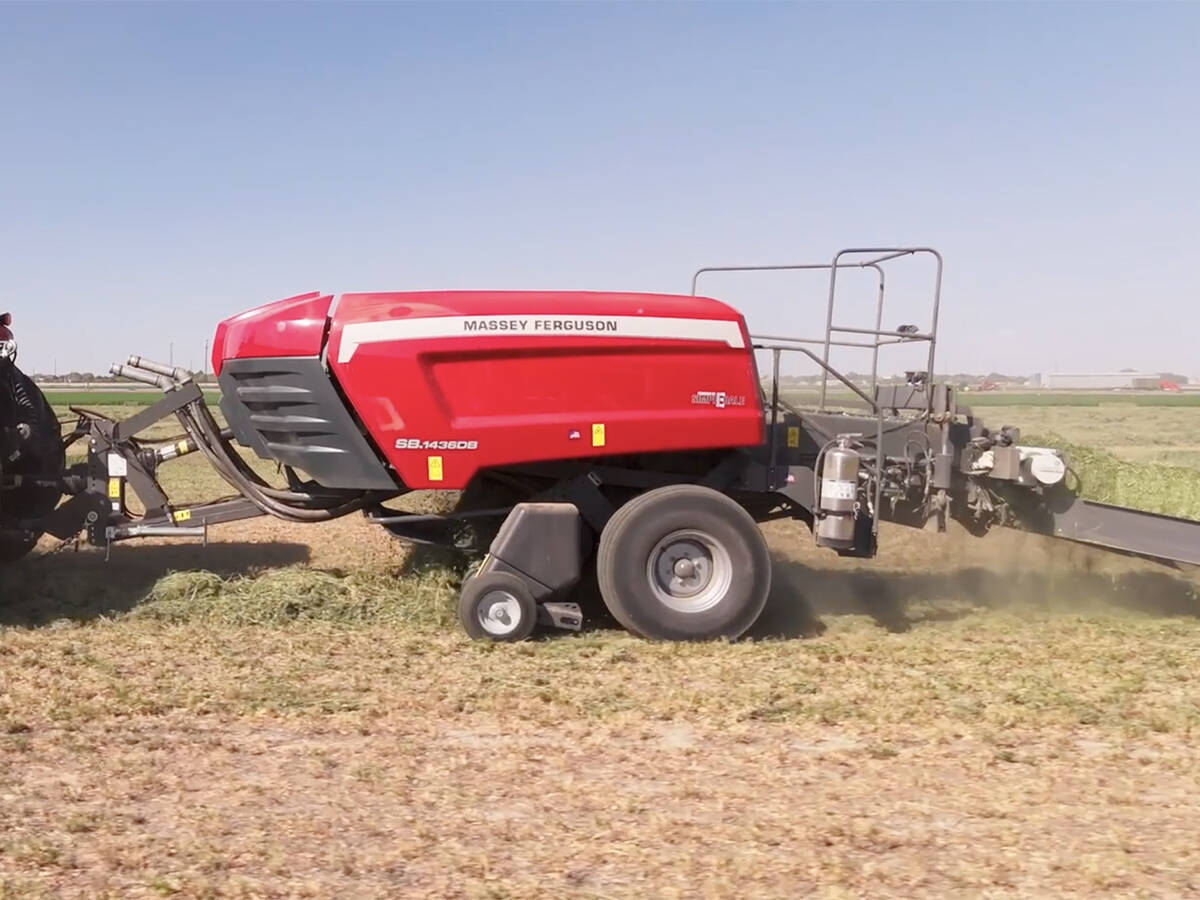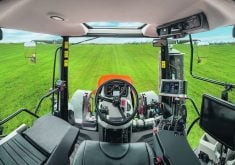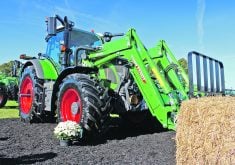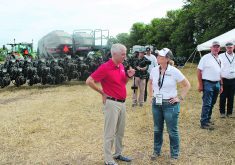Agco used both the simultaneous National Farm Machinery Show in Louisville, Kentucky, and the World Ag Expo in Tulare, California, events to introduce its innovative SB.1436DB small square baler under the Hesston by Massey Ferguson brand, debuting it at both shows.
The machine builds two 14- by 18-inch small square bales at the same time to maximize field productivity. Bale length can be adjusted from 24 to 52 inches.
“We’ve been working on this a little over four years,” said Dane Mosel, marketing manager for Hesston by Massey Ferguson hay products at the MF exhibit in Tulare.
“We did a lot of concept work, but the main project started early in 2021. We’ve put over a half million bales through our prototype machines in just shy of a dozen locations across North America.”
Read Also

Genesis Fertilizers seeks government funding
Genesis Fertilizers is actively seeking funding from government and a strategic partner. The company dispelled a rumour that DL E&C has abandoned the project.
The 105-inch pickup, which is wider than the one on the brand’s large square baler, can handle a big swath and channels the windrow into a single 36-inch wide chamber.
“We have a single chamber and one plunger,” added Jessica Williamson, Agco’s hay and forage specialist, from the Louisville show.
“It has a splitting knife and separation wall and creates two 18-inch wide bales.”
Density is hydraulically controlled, and there are manual adjustments that can made to the chamber if needed to tailor it to any type of crop.
The baler uses the same gearbox as the brand’s 1844S standard baler. The single plunger operates at 90 strokes per minute, but as the material flows through each side of the machine, it’s measured and tied separately.
“Each of those two bales coming out of the chute are being tied independently,” said Williamson.
“It allows us to keep that precise length. When it comes to stacking and transportation, that precise length is very important to our customers.”
Added Mosel: “It has two independent knotter trip systems…. “There’s a star wheel, a metering arm and a knotter trip with a needle setup on each side of the chamber, so we’re always going to get a perfect length bale.”
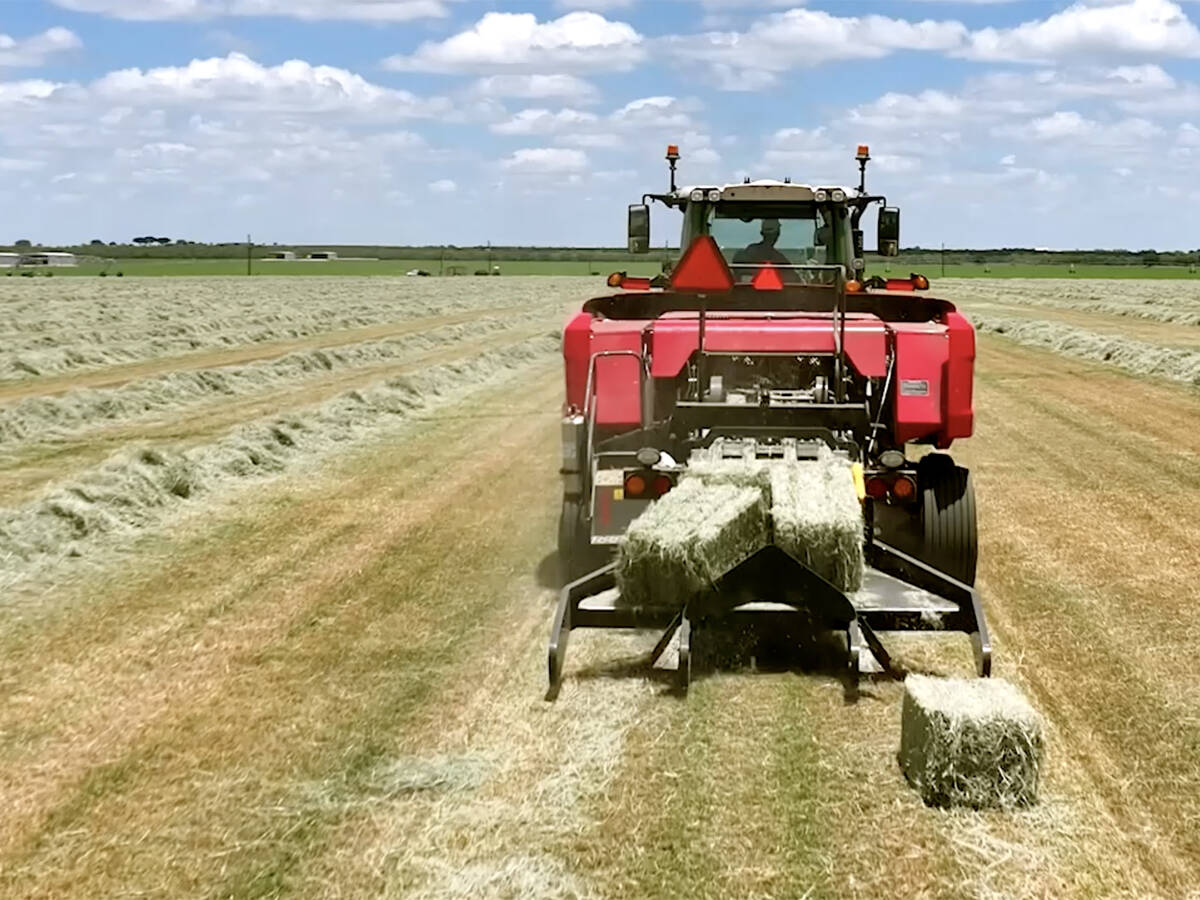
To manage bale quality, the SB.1436DB comes standard with Hesston’s SimplEbale control system.
“It’s a control system we’ve had on the market as a retrofit to our other 1800 Series small square balers,” Mosel said.
“We can tie in scales and run an automated density system. We can plug in a target weight, and it’s going to calculate out bale weights on a five bale rolling average. The controller will adjust the density to try and hit that target weight.”
Added Williamson: “It allows us to take inventory of our flake history…. It also has the option for bale moisture, as well as flake width and count. Those highly coveted features that are available in our large square baler are now in our small square baler system.”
However, SimplEbale is not ISOBUS compatible. It uses its own cab-mounted monitor to input operator control. That allows older tractors that aren’t ISOBUS compatible to still operate the baler.
Maintenance has been simplified as well with automated knotter lubrication and a moveable twine box that allows improved access to components.
The twine box can hold up to 20 balls, which should allow for making up to 8,000 bales without refilling.
Agco is now accepting orders for the new baler.


